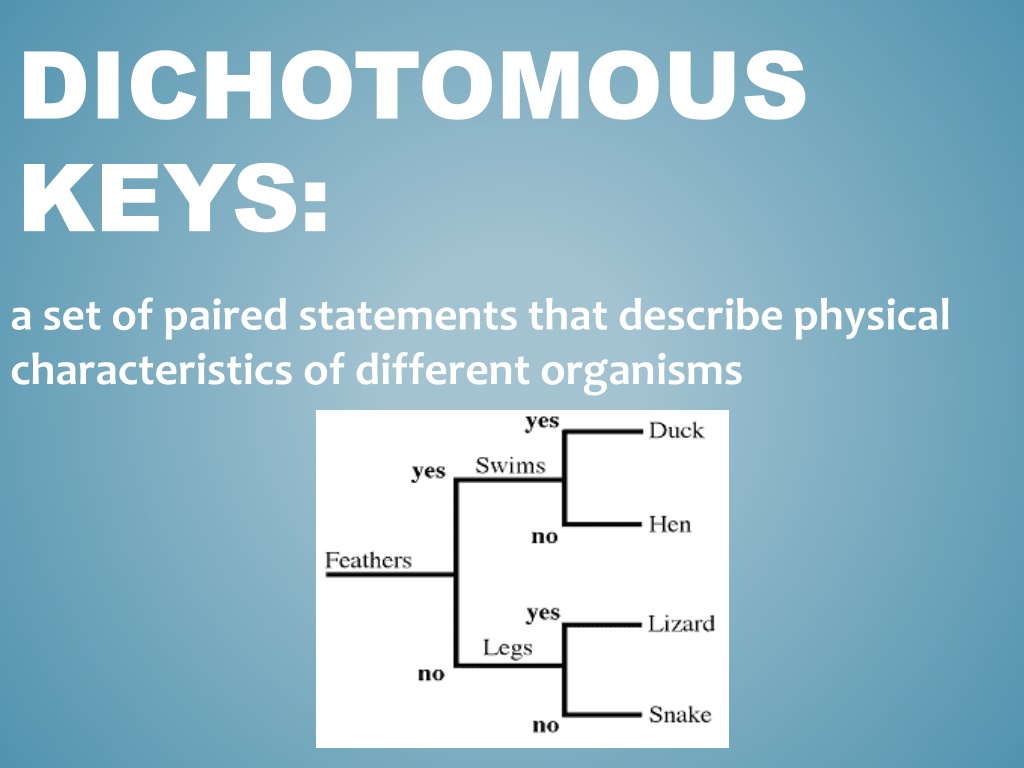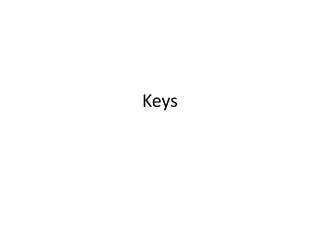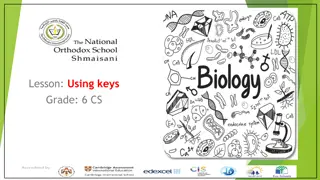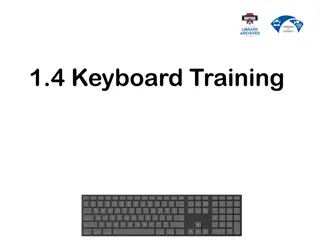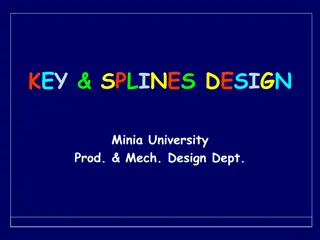Understanding Dichotomous Keys and Cladograms in Evolutionary Biology
Dichotomous keys are utilized to classify different organisms based on their physical characteristics, while cladograms depict evolutionary relationships. Derived traits play a crucial role in understanding evolutionary history, indicating features present in later organisms but not earlier ones. Practice exercises involving North Carolina leaves, fish, and norns are used to demonstrate the application of these tools in biology.
Download Presentation

Please find below an Image/Link to download the presentation.
The content on the website is provided AS IS for your information and personal use only. It may not be sold, licensed, or shared on other websites without obtaining consent from the author. Download presentation by click this link. If you encounter any issues during the download, it is possible that the publisher has removed the file from their server.
E N D
Presentation Transcript
DICHOTOMOUS KEYS: a set of paired statements that describe physical characteristics of different organisms
DICHOTOMOUS KEY: NAME THAT POTATO CHIP! ? ? ? ? ? ? ?
NOW ITS YOUR TURN TO PRACTICE USING A DICHOTOMOUS KEY!! Practice classifying North Carolina leaves, fish, and norns (aliens!) by using the dichotomous keys in your packet. fish Norn NC Leaf
Using the cladogram, answer the following on p. 139 in your notebook. 1. How many derived characteristics are represented on the diagram above? ______ 2. Which animals have claws or nails? ____________________________________ 3. Which animals have jaws? ___________________________________________ 4. How many derived characteristics separate hagfish form chimps and what are they? ____________________________________________________________
CLADOGRAMS: a diagram that shows evolutionary relationships among organisms. Based on PHYLOGENY: the evolutionary history of a species Doesn t focus only physical characteristics, looks at evolutionary history instead Cladograms can also be called phylogenetic trees.
DERIVED TRAITS TRAITS = CHARACTERISTICS Derived traits are characteristics or features that are found in later organisms but not in earlier ones. Derived traits are represented as small tick marks on a cladogram with the name of the trait next them. Organisms closer to one another on the tree share a more recent ancestor than the ones farther away from each other.
PRACTICE Derived Characteristics Lungs Claws/Nails Feathers Jaws Fur/M. Glands Hagfish Perch Salamander Lizard Pigeon Mouse Chimp
PRACTICE Derived Characteristics Lungs Claws/Nails Feathers Jaws Fur/M. Glands Hagfish Perch Salamander x Lizard Pigeon Mouse Chimp
PRACTICE Derived Characteristics Lungs Claws/Nails Feathers Jaws Fur/M. Glands Hagfish Perch Salamander x x x Lizard Pigeon Mouse Chimp
PRACTICE Derived Characteristics Lungs Claws/Nails Feathers Jaws Fur/M. Glands Hagfish Perch Salamander x x x x x x Lizard Pigeon Mouse Chimp
PRACTICE Derived Characteristics Lungs Claws/Nails Feathers Jaws Fur/M. Glands Hagfish Perch Salamander x x x x x x x x x Lizard Pigeon Mouse Chimp x
PRACTICE Derived Characteristics Lungs Claws/Nails Feathers Jaws Fur/M. Glands Hagfish Perch Salamander x x x x x x x x x x x x Lizard Pigeon Mouse Chimp x x
PRACTICE Derived Characteristics Lungs Claws/Nails Feathers Jaws Fur/M. Glands Hagfish Perch Salamander x x x x x x x x x x x x x x x Lizard Pigeon Mouse Chimp x x x
You can also use this table to construct a cladogram! To help you, you can make a venn diagram. Hagfish perch salamander lizard pigeon mouse chimp Derived Characteristics Lungs Claws/Nails Feathers Jaws Fur/M. Glands Hagfish Perch Salamander x x x x x x x x x x x x x x x Lizard Pigeon Mouse Chimp x x x
Now you can use your venn diagram to fill out the cladogram: chimp perch salamander lizard pigeon hagfish mouse feathers Fur; Mammary Glands Claws or Nails Lungs Jaws Hagfish perch salamander lizard pigeon mouse chimp Jaws Lungs Claws/Nails Feathers Fur/M. Glands
